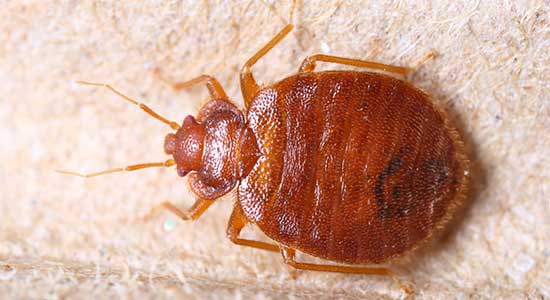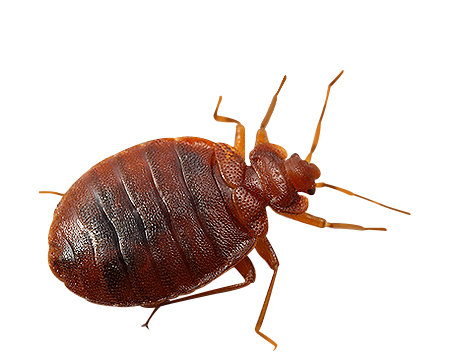How to Identify Bed Bug Bites and Prevent Future Infestations
How to Identify Bed Bug Bites and Prevent Future Infestations
Blog Article
Get Educated About the Kinds of Bug Control Approaches and Their Benefits for Property Owners
Comprehending the numerous insect control methods readily available to property owners is vital for effective bug monitoring. Homeowners that are knowledgeable can make strategic options that not only address pest concerns but additionally enhance the total high quality of their living setting.
Chemical Parasite Control Techniques
Chemical parasite control techniques are a crucial part of integrated pest monitoring strategies for house owners seeking efficient remedies to pest infestations. These techniques entail the application of chemical compounds designed to get rid of or hinder insects that intimidate personal property, health and wellness, and convenience. Common chemicals utilized consist of insecticides, herbicides, rodenticides, and fungicides, each tailored to target certain pests.
The primary advantage of chemical bug control is its fast performance; several formulations offer instant outcomes, minimizing pest populaces significantly in a short time. Additionally, developments in chemical solutions have actually brought about products that are more eco-friendly and have lower toxicity levels for non-target organisms when applied appropriately.

Biological Parasite Control Techniques
Natural pest control methods have acquired prestige as homeowners look for more secure and a lot more sustainable alternatives to standard chemical techniques. Biological bug control techniques use natural killers, bloodsuckers, or microorganisms to manage bug populations effectively. This technique is not only ecologically pleasant however likewise minimizes the threat of damage to non-target types, consisting of valuable pests and wildlife.
One of the most common biological control methods entails introducing natural killers into the atmosphere. Ladybugs can be used to manage aphid populaces, while nematodes target soil-dwelling bugs like grubs. Furthermore, parasitoids-- organisms that survive or within a host-- can be employed to manage specific bug varieties by laying eggs inside them, eventually resulting in their demise.
Another method is using biopesticides, which are stemmed from all-natural products such as minerals, plants, or germs (bed bug exterminator). These products can efficiently target bugs while presenting very little threat to people and animals. On the whole, biological bug control strategies provide homeowners with an effective means of insect monitoring that straightens with eco-friendly principles, advertising a healthier living environment while lowering reliance on artificial chemicals
Mechanical Pest Control Methods
Mechanical pest control techniques include a selection of methods that physically stop or remove parasites without the use of chemicals. These methods are specifically beneficial for house owners seeking ecologically pleasant options while guaranteeing the safety and security of their home.
One typical technique is making use of barriers, such as screens, catches, and nets, which prevent pests from going into homes or details areas. Mounting window displays can effectively maintain look at this website insects out, while using physical obstacles around gardens can prevent larger insects like rabbits or pest contractor deer. Additionally, mechanical traps designed for rodents can record and eliminate these bugs without the need for poisonous compounds.
Another reliable method entails the usage of vacuums and mops to remove pests straight from surfaces. Regular cleaning and maintenance can dramatically minimize insect populaces by eliminating food sources and hiding spots. Utilizing devices like ultrasonic bug repellents can hinder different insects with sound waves that are undesirable to them yet inaudible to people.
Cultural Parasite Control Practices
Social pest control methods concentrate on modifying the setting and administration techniques to produce conditions that are less for pest problems. These practices are essential in maintaining a well balanced environment and decreasing the reliance on chemical treatments. By changing farming methods, house owners can successfully hinder parasites while promoting plant health and wellness.
One usual method includes crop rotation, which disrupts the life cycles of parasites by changing the kinds of plants expanded in a certain area (bed bug exterminator). This not only minimizes pest populaces yet likewise boosts soil health. Furthermore, intercropping-- growing varied crops in closeness-- can confuse bugs and decrease their ability to find their recommended host plants
Water administration is one more essential aspect of social practices. Correct irrigation strategies can protect against standing water, which acts as a breeding place for insects and other bugs. Moreover, keeping sanitation in and around the home, such as regularly getting rid of debris and food waste, can considerably reduce parasite attraction.
Incorporating these social techniques right into an extensive bug management strategy allows homeowners to produce an atmosphere that normally prevents bugs, thus improving the efficiency of various other control methods while advertising lasting gardening and landscaping.

Integrated Pest Administration Approaches
Integrated Insect Administration (IPM) stands for an all natural technique that integrates different methods to efficiently handle bug populations while decreasing environmental influence. This method integrates organic, social, physical, and chemical practices to accomplish lasting bug control. By assessing pest populations and their natural adversaries, IPM highlights monitoring and determining bugs prior to implementing control procedures.
Among the core concepts of IPM is the usage of limits, which establish the level of insect task that necessitates treatment. This guarantees that therapies are used only when needed, decreasing the reliance on chemical pesticides. Biological control methods, such as introducing natural predators or bloodsuckers, operate in combination with cultural methods like plant turning and habitat adjustment to interrupt pest life cycles.
Moreover, IPM urges using least-toxic chemical options when intervention is needed, focusing on items More Help that posture very little danger to non-target microorganisms and the setting. For home owners, adopting IPM approaches not only boosts the efficacy of insect monitoring however also promotes a healthier living atmosphere, promoting biodiversity and minimizing chemical exposure. Eventually, IPM empowers house owners to make enlightened decisions that balance bug control with environmental duty.
Final Thought
In verdict, recognizing the various pest control techniques encourages property owners to make enlightened decisions relating to pest monitoring. Each method-- chemical, organic, mechanical, cultural, and incorporated pest management-- uses distinctive benefits that satisfy various needs and preferences. By selecting ideal approaches, homeowners can efficiently handle insect populaces while lessening wellness dangers and ecological influences. This informed strategy contributes to a much healthier living atmosphere, promoting total well-being for households and animals alike.
Comprehending the various insect control approaches available to homeowners is important for effective pest monitoring.Chemical pest control techniques are a vital part of integrated bug management methods for property owners looking for effective solutions to pest infestations. In general, organic parasite control techniques offer property owners with a reliable ways of parasite monitoring that aligns with eco-friendly concepts, advertising a healthier living environment while lowering reliance on synthetic chemicals.
Cultural insect control practices focus on changing the setting and monitoring strategies to create problems that are much less conducive to pest infestations.In verdict, understanding the different insect control techniques empowers property owners to make enlightened choices regarding pest administration.
Report this page